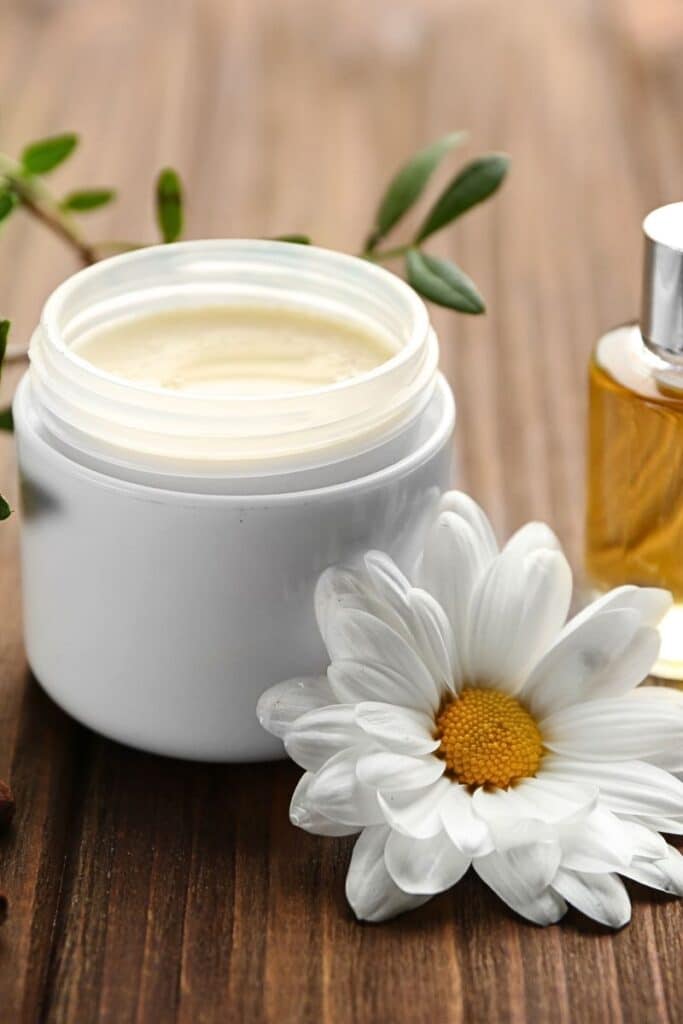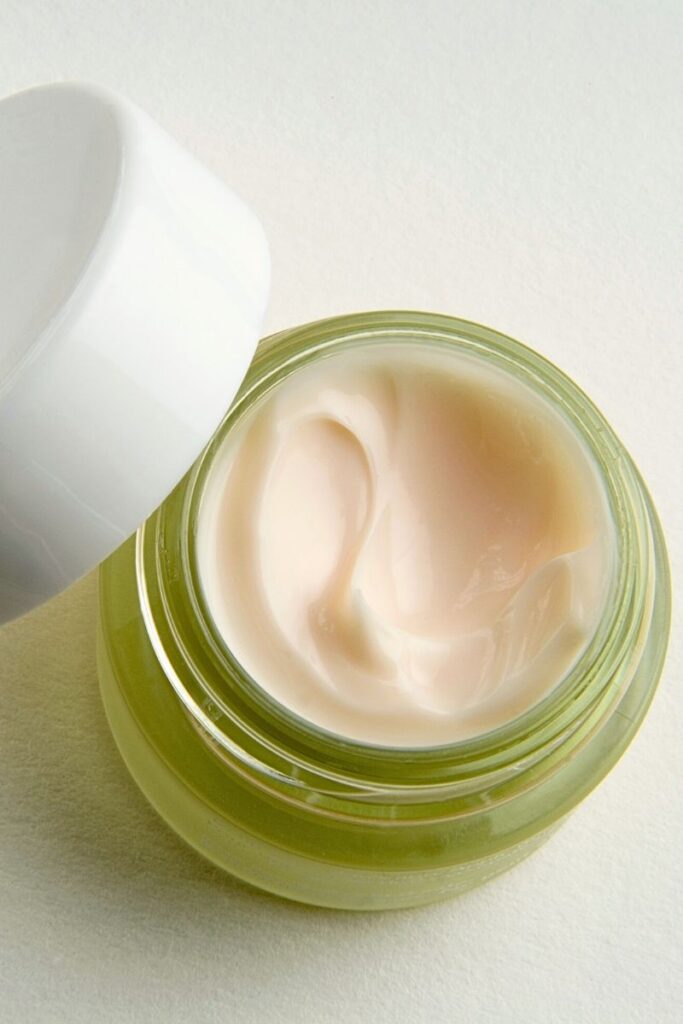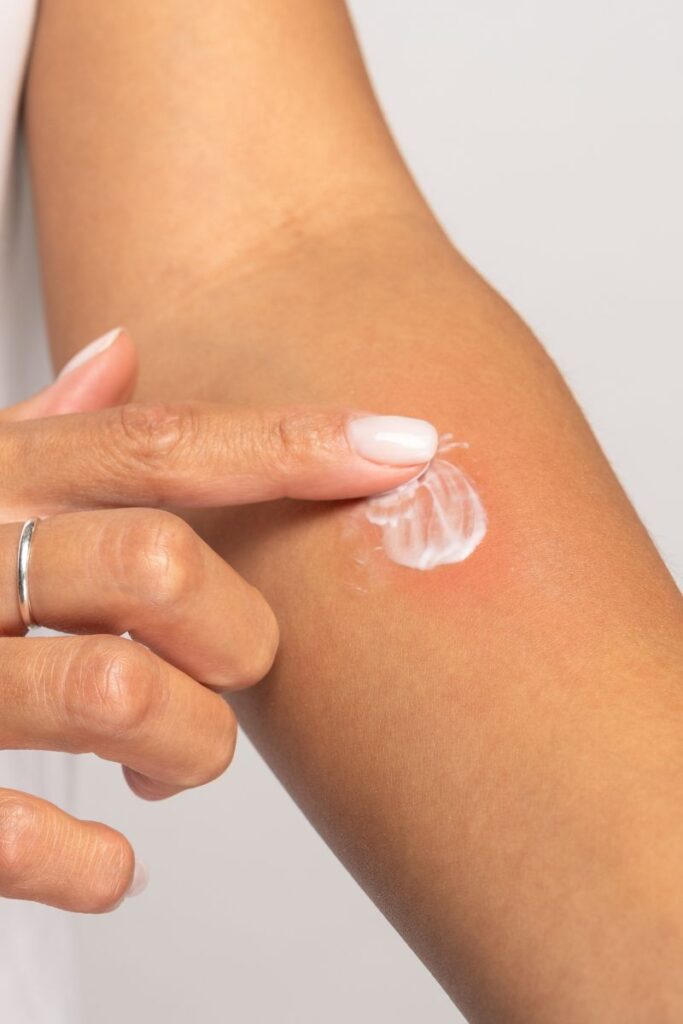Chamomile Lotion for Poison Ivy: Soothe and Heal Naturally
Planning a camping trip or long hike? This soothing Chamomile Lotion for Poison Ivy may come in very handy when you need it the most.

This post may include affiliate links. Please refer to our disclaimer for full disclaimer.
Poison ivy, poison oak, and poison sumac can turn a beautiful outdoor adventure into a nightmare. The itchy, oozing skin irritations caused by these poisonous plants can be incredibly uncomfortable.

While there are over-the-counter remedies available, such as calamine lotion and hydrocortisone cream, why not try a natural approach? In this article, we'll explore the benefits of chamomile lotion for poison ivy and how you can make your own DIY herbal chamomile lotion at home. But first, let's understand the condition and the main ingredients involved.
Understanding Poison Ivy Rashes and Calamine Lotion
Contact with poison ivy, poison oak, or poison sumac causes an allergic reaction on the skin known as contact dermatitis. The rash typically appears within 12 to 48 hours and is characterized by redness, swelling, and severe itching. Calamine lotion, a popular skin protectant, has long been used to alleviate the discomfort of minor skin irritations, including poison ivy rashes.
The main ingredient in calamine lotion is zinc oxide, an active ingredient that provides a soothing and cooling effect on the skin. It acts as an astringent, drying out the oozing skin irritations and reducing inflammation.
Additionally, zinc oxide has antimicrobial properties that can protect the skin from secondary infections and promote the healing process. We're going to be using this active ingredient in its normal state - as non-nano zinc oxide powder.
3 Other Ingredients In This DIY Chamomile Lotion for Poison Ivy
Each of these ingredients found in our DIY Chamomile Lotion plays a specific role in providing relief and promoting healing when used as a poison ivy remedy.
- Chamomile Tea: Chamomile tea possesses anti-inflammatory properties and can help soothe irritated skin caused by poison ivy. The compounds in chamomile tea, such as chamazulene and bisabolol, have calming effects and can reduce redness, itching, and inflammation. Additionally, chamomile tea has been used for centuries to promote wound healing and provide relief from various skin conditions.
- Aloe Vera Gel: Aloe vera gel is widely known for its soothing and cooling properties. When applied topically, it can alleviate itchiness, reduce inflammation, and provide relief from poison ivy symptoms. Aloe vera contains compounds like polysaccharides, vitamins, and minerals that aid in skin repair and regeneration. Its moisturizing effect can also prevent dryness and promote faster healing of the affected skin.
- Coconut Oil: Coconut oil is a natural moisturizer that can help hydrate and nourish the skin affected by poison ivy. It forms a protective layer that locks in moisture and prevents excessive dryness. Coconut oil also has antimicrobial and anti-inflammatory properties, which can help reduce itching and protect against potential infections. Its fatty acids, such as lauric acid, can promote healing and repair damaged skin.

By combining these ingredients, you create a powerful poison ivy remedy that addresses inflammation, itching, and skin damage while providing soothing relief and supporting the healing process. Together, these ingredients work to provide temporary relief from itching and promote the healing process.
DIY Herbal Chamomile Lotion Recipe
Now, let's explore the DIY herbal chamomile lotion recipe, which combines the soothing properties of chamomile with the skin-protecting qualities of zinc oxide powder.
What You'll Need
1 cup of chamomile tea (brewed and cooled)
2 tablespoons of zinc oxide powder
1 tablespoon of aloe vera gel
1 teaspoon of coconut oil
10 drops lavender essential oil (optional)
10 drops chamomile essential oil (optional)
How To Make This DIY Poison Ivy Lotion
Brew a cup of chamomile tea and allow it to cool to room temperature.
In a small mixing bowl, combine 2 tablespoons of zinc oxide powder, 1 tablespoon of aloe vera gel, and the cooled chamomile tea.
Optional: Add 1 teaspoon each of lavender essential oil and chamomile essential oil for additional soothing benefits.
For enhanced moisturization, include 1 teaspoon of coconut oil and thoroughly mix all the ingredients.
Transfer the mixture into a clean, airtight container, and store it in a cool, dry place.
Enjoy the skin-calming and protective properties of this homemade chamomile lotion, featuring the goodness of chamomile tea and zinc oxide powder. Your skin will thank you for this natural and nourishing DIY skincare solution!

DIY Poison Ivy Lotion Remedy
Materials
- 1 cup of chamomile tea brewed and cooled
- 2 tablespoons of zinc oxide powder
- 1 tablespoon of aloe vera gel
- 1 teaspoon of coconut oil
- 10 drops lavender essential oil optional
- 10 drops chamomile essential oil optional
Instructions
- Brew a cup of chamomile tea and allow it to cool to room temperature.
- In a small mixing bowl, combine 2 tablespoons of zinc oxide powder, 1 tablespoon of aloe vera gel, and the cooled chamomile tea.
- Optional: Add 1 teaspoon each of lavender essential oil and chamomile essential oil for additional soothing benefits.
- For enhanced moisturization, include 1 teaspoon of coconut oil and thoroughly mix all the ingredients.
- Transfer the mixture into a clean, airtight container, and store it in a cool, dry place.
How to Use Chamomile Lotion for Poison Ivy
Before applying any topical medication, it is essential to clean the affected area gently. Use a soft cloth or cotton ball soaked in purified water to cleanse the skin. Once the area is clean and dry, apply a thin layer of the chamomile lotion using a cotton pad or your fingertips. Repeat this process three to four times a day or as needed.
You can also use this chamomile lotion for bug bites, to protect skin from uv radiation, on heat rash, on mild rashes and mild skin infections.

It's important to note that chamomile lotion is meant for external use only. Avoid applying it to open wounds, mucous membranes, or near the eyes. If you experience any adverse effects or if the symptoms worsen, discontinue use and seek medical help.
When to Seek Medical Assistance
While chamomile lotion can provide relief for mild itchiness and inflammation, severe reactions or widespread rashes may require medical treatment. If you experience swelling of your face, trouble breathing, or a very serious allergic reaction, seek immediate medical attention.
Additionally, pregnant women, individuals with pre-existing medical conditions, or those taking medications should consult their healthcare provider before using any new topical treatments.
Conclusion
Chamomile lotion, with its antiseptic and astringent properties, can offer temporary relief from the discomfort of poison ivy rashes and a variety of other skin conditions. While the DIY herbal chamomile lotion recipe provided here can provide mild relief, it's important to remember that individual results may vary.
Remember to always practice good hygiene, avoid poisonous plants, and wear appropriate protective clothing when venturing into areas known to harbor these plants. Prevention is the best approach. If contact occurs, promptly clean the affected area and take necessary measures to minimize further irritation.
This information is provided for educational purposes only and should not replace professional assistance. If you have concerns or questions, please reach out to a healthcare provider or your local poison control center. Stay safe, stay informed, and take care of your skin!



